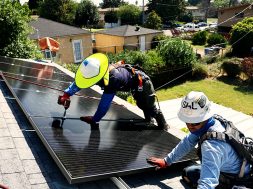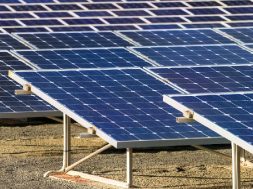
AMDAVADIS LEAD THE PACK IN GOING SOLAR
Raj Patel, a businessman and resident of Mithakali crossroads in Ahmedabad, was impressed with the benefits his friend was reaping by installing a solar power generator on his rooftop. He decided to give it a go. After some research, he installed a 5KW system on his rooftop. “My electricity bill has already reduced by 80%,” Patel beams. He is among the growing breed of Amdavadis who are switching to alternate energy to power their homes.
When it comes to adapting to renewable energy sources like solar power, Gujarat is definitely walking the talk! As per figures shared by ministry of new & renewable energy (MNRE), of the 353 MW of solar energy projects commissioned in the country last year, one third (117.4 MW) were in Gujarat. These include both subsidised and non-subsidised projects.
Rooftop project a major draw
The solar rooftop project initiated by the Gujarat Energy Development Agency (GEDA) in November 2016 was among the major initiatives rolled out by the state government to promote solar energy. The scheme offers total 44 per cent subsidy for installation of solar power generation units on rooftops, including 30 per cent by MNRE and 14.4 per cent by the State government. GEDA figures show that in the past two years Ahmedabad has led the way in commissioning of solar rooftop projects.
Up to March 31, 2018, as many as 4,037 systems have been installed in Ahmedabad, with capacity of 16,598.939 KW energy. Vadodara has 3,652 such systems with 11,134.29 KW capacity while Surat has 3,559 systems with capacity of 11,008.84 KW. In Rajkot, a total of 1,778 solar power systems with 4601.77 KW capacity have been installed. Earlier one such system would cost Rs 69,000; however, prices have gone down this year.
Plan to revise prices of solar power systems
“In2017-18, a total of 18,794 residential solar rooftop systems with capacity of close to 59,071 MW were commissioned in the state. We have a cap of Rs 20,000 wherein the state government offers Rs 10,000 per kW up to 2 kW on a solar power generating unit. We will be issuing tenders afresh this year to take on vendors and decide new price for solar power systems for this year after their prices have reduced. The central government too will fix a price for the same,” said S Chhakchhuak, IAS, director of GEDA.
In 2016-17, as many as 844 systems were commissioned with capacity of 1.6 MW 17, said GEDA officials. Simplifying the benefits of solar power generation system, SB Patil, deputy director (I/C), GEDA, said, “On an average, a four-member family uses 2.5 to 3 units daily; however 1 kW solar energy system can produce 3.5-4 units per day which is more than enough for the family’s power needs. If you install a solar power generation system, all gadgets can be powered by it.” He added that the average pool purchase cost is Rs 3.24 per unit of electricity which will be returned if unused. “Even if electricity rates change in Gujarat, users of solar power will benefit nevertheless. Payback time for the money you invest in the system is not more is not more than four years,” said Patil.
The agency currently has 110 vendors. With cost of solar power generation system reducing, it plans to introduce fresh pricing and also bring in vendors afresh, officials added. Interestingly, while industrial consumers were 274 generating 35022.69 kW, commercial were 240 generating 5013.77 kW energy and units used in government buildings were 388 generating 10131.29 kW even as all of them were not covered under any subsidy.
Power consumption in our family was high. So I decided to opt for government subsidy and embraced solar power this February. I got Rs 850 credited in March- April bill,
-Pankaj Gohel, entrepreneur
‘Solar energy has made a big difference ’
Chandlodia resident Pankaj Gohel (66) who is a textile entrepreneur was forced to opt for ‘alternative’ energy as his joint family of 10 members incurred huge electricity bills. While return on investment in solar energy takes 4 years, Gohel has already started reaping the benefits. “Power consumption in our family was high, resulting in huge bills. So I decided to opt for government subsidy and embraced solar power this February. The process is lengthy and took three months. However, it eventually ended well for me as I actually got Rs 850 credited in the March-April bill,” he said.















